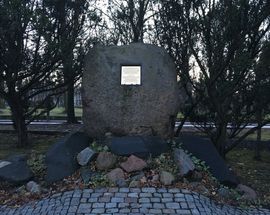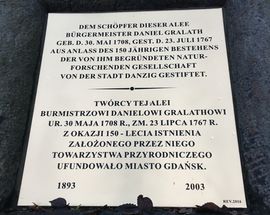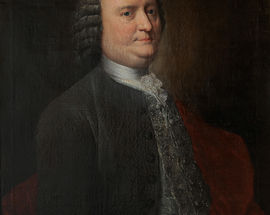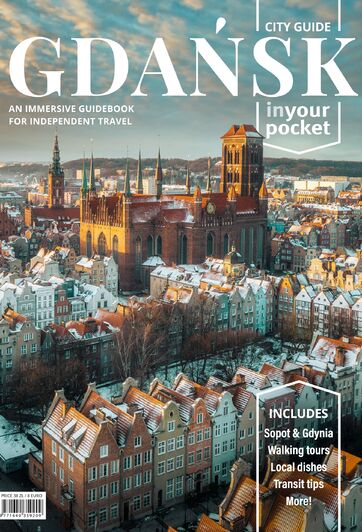Daniel Gralath Monument
Today you can find a monument to Daniel Gralath approximately halfway along the road he financed at a cost of over 100,000 Guilders. The story of the monument and the man are rather good in terms of demonstrating the history of the city. Daniel Gralath (1708-1767) was born and educated in Gdansk before completing his studies in Halle, Leyden and Marburg. He returned to Gdansk, married the daughter of the naturalist Jakob Theodor Klein and was an active member in various roles of the city council, serving as mayor between 1763 and 1767. He also published the first ever work on the study of electrostatics, a three-volume work entitled the History of Electrostatics (1747, 1754 and 1756) and is credited with being at the forefront of research of electricity. He improved the design of Ewald Kleist’s Leyden Jar and was the first to combine several jars to create a battery. Shortly before his death he was the initiator of what was called the Grosse Allee (Great Avenue), today’s Al. Zwycięstwa, which was built in the years 1768-1770 and to which he bequeathed the 100,000 Guilders.
Interestingly he wasn’t honoured in the city until 126 years after his death and the stone you see today was unveiled in 1893. Gdansk had by then been under Prussian/German control since the first partition of Poland in 1772 and it might be assumed that the honour was bestowed at a time when Germany was becoming increasingly confident under the rule of Kaiser Wilhelm II. Grosse Allee was renamed Hindenburg Allee in the 1930s and remained as such until the fall of Danzig in 1945. The avenue was renamed in honour of Soviet Marshall Konstantin Rokossovsky, who became Poland’s Minister of Defence in 1949. The avenue finally became known by its current name, Victory Avenue, in 1956.
As part of the post-war Polish government’s attempts to rid Gdansk of all traces of its German history, Gralath’s memorial stone remained, but was re-dedicated to the memory of Polish Scouts murdered by the Nazis in WWII and a new plaque fitted. The stone was only re-dedicated to Daniel Gralath in 2003 when, with the Scouts’ memorial relocated to a different part of the city, the stone was renovated, lit and fitted with a new plaque commemorating the former mayor of Gdansk, notably written in both German and Polish and funded (for the second time as the inscription points out) by the city of Gdansk.
The inscription reads ‘Creator of this avenue, Mayor Daniel Gralath, Born May 30, 1708, Died July 23, 1767. On the occasion of the 150th anniversary of his founding of the Nature Society, funded by the city of Gdansk 1893, 2003.
Today you are likely to pass it by as it sits on a grassy island separating the Gdansk bound routes of Al. Zwycięstwa, but it’s worth keeping an eye for it nonetheless.






Comments